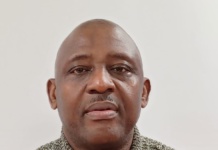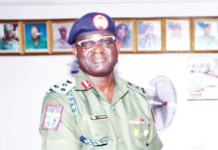
By Owen A. Clarke – Regardless of the eventual disposition of the Derek Chauvin trial in Minnesota, U.S.A, history will record that on April 20, 2021 a White Minneapolis Police Officer was found guilty of murdering a Black man in the United States. That such a finding was possible in the United States remained in question until the very last moment of the trial.

Minnesota Attorney General Keith Ellison told 60 Minutes “I was never convinced we were going to win this case until we heard the verdict of guilty… Particularly when the victim is a person of color, it’s just rare that there’s any accountability… I was not sure that we were going to get the just result that we did get until I heard Judge Cahill announce the verdict.” An appeal is almost certain, and statements by both the trial judge and conservative media and political leaders suggest that such an appeal will be as contentious as was the trial.
In light of the history of racial injustice in the United States of America, in which Black Americans have often died in interactions with White police officers, this trial was nevertheless a potential watershed case. Professor Ho of University of Colorado has argued that the ideology of white supremacy, is a pattern of values and beliefs ingrained in nearly every system and institution in the United States. This ideology, she says, believes that to be not -white means you are less than human, a disposable object for others to abuse and misuse. She concluded that “understanding the depth and reach of this ideology of racism…brings each person, and the nation as a whole, closer to addressing systemic inequity.” Writing in June 2020 the Los Angeles Times editorial board declared that “reading the names of African Americans killed by police in or near Minneapolis alone can boggle the mind, and of course these are only the names that made the national news.” Continuing in this vein, the board noted that in “high-profile police killings in Los Angeles, New York, Chicago, Cleveland, Texas, the Southeast, the Northwest, the East Coast – the manner of killing and the justifications offered vary, as do the consequences for the officers involved, but one common thread running through the many deadly incidents is that the victims are disproportionately Black.”
Many of the names have become household ones: Dreasjon Reed in Indianapolis, Breonna Talyor in her Kentucky bed, Ahmaud Arbery while jogging in Georgia, Botham Jean in his Dallas apartment, mentally ill Ezell Ford in California, Michael Brown in Fergerson, Missouri, Eric Garner on a New York pavement, and Trayvon Martin by a civilian police wanna-be in Florida, to name but a few. In response to recent murders, increasingly racially mixed crowds of citizens had taken to the streets to express their disgust, frustration, and anger at these repeated acts of injustice and police brutality. Yet the injustices continued with alarming frequency. An evolution in tactical, and even strategic, responses to this situation was however occurring! The Los Angeles Times noted that “when Martin’s killer was acquitted, outraged activists formed the Black Lives Matter (BLM) movement, which has worked for change and has insisted that African Americans killed by police (or by those who take police powers on themselves) are not forgotten.” The New York Times observed that Floyd’s death saw a “moment of collective grief and anger that swiftly gave way to a yearlong, nationwide deliberation on what it means to be Black in America.” The paper reported that “first came protests, in large cities and small towns across the nation, becoming the largest mass protest movement in U.S history. Then over the next several months, nearly 170 Confederate symbols were renamed or removed from public spaces. The Black Lives Matter slogan was claimed by a nation grappling with Mr. Floyd’s death.” It concluded that “over the next 11 months, calls for racial justice would touch seemingly every aspect of American life on a scale that historians say had not happened since the civil rights movement of the 1960s.” According to the Times, observers were amazed that public outcries over racism in the United States erupted across the world, spurring protest in Berlin, London, Paris and Vancouver, and in capitals in Africa, Latin America and the Middle East. The Times reported that White Americans, unfamiliar with the concept of structural racism, drove books covering the subject to the top of the best-seller lists.
When Derek Chauvin placed his knee on the neck of George Floyd, in the intersection of East 38th Street and Chicago Avenue in Minneapolis, Minnesota, USA (now known as George Floyd Square) for 8 minutes and 46 seconds, America held its collective breath in agony. Once again an unarmed Black man had been killed at the hands of a White police officer. Would this murder also go unpunished? Would Chauvin face the courts, and if he did could he possibly be judged as guilty beyond a reasonable doubt? What answers might arise in a trial about the differences between “force” and “violence”, and as Professor Gordon of the University of Connecticut asked on April 16, 2021, “is there ever (such a thing as) excusable police violence?” So, as we examine the ways in which this case moved inexorably towards a historic conclusion, we must attempt to determine if the guilty verdict against Officer Chauvin represented a significant symbolic lifting of the knee from the neck of Black America, representing the ushering in of a new American era of racial justice and police reform.
A jury of his peers found nineteen-year Police Officer veteran, Derek Chauvin, guilty of second-degree murder, third-degree murder, and second-degree manslaughter. The second degree murder charge stated that 45 year old Chauvin intentionally assaulted 46 year old George Floyd, an unarmed Black man, causing his death. The third-degree murder charge stated that Chauvin perpetrated an “eminently dangerous” act evincing a “depraved mind,” and the second-degree manslaughter charges said that Chauvin’s “culpable negligence” caused Floyd’s death. The trial lasted a three week riveting television-covered judicial contest that included intricate, complex prosecution and defense presentations covering medical testimony and counter-testimony, and police officer testimony on every aspect of the situation that unfolded on George Floyd Square on May 25, 2020, the day Floyd repeated 20 times that he couldn’t breathe, called for his Mom, and pleaded in vain for his life. Eleven days of testimony from police officers, medical experts with charts and timelines, paramedics and onlookers resulted in what has been described as perhaps “the most ambitious and extensive case in any trial of an officer for an on-duty killing.” Despite the complexity of the issues addressed in the trial, and the number of witnesses presented by both sides, the trial strategies were amazingly simple. The prosecution sought to force the jury to use its commonsense to interpret the data and images it would hear and see, while the defense fought valiantly to establish reasonable doubt in the mind of at least one member of the jury.
The prosecution in this case, was however significantly different to that in so many other trials of White police officials over the years. The prosecution, led in court by Steve Schleicher, was under the direct supervision of Keith Ellison, the first Muslim American to be elected to statewide office in Minnesota. Ellison served Minnesota for 12 years as a Congressman in the U.S. House of Representatives and was a civil rights litigator for over 16 years. He had given up his congressional seat to become Minnesota’s first Black Attorney General. Added to this tremendous motivation for prosecutorial excellence, Schleicher had a video that simply had to be seen to be believed. He had in his possession a video that showed 9 minutes and 29 seconds that would sear an image of abject horror into the minds of the jury. As Floyd’s brother Philonise Floyd and Floyd family lawyer Ben Crump would later observe, George Floyd would have been “just another dead man” if it was not for the video made and posted around the world by 17-year old Darnella Frazier on her camera phone. This video, viewed over 50 million times around the world according to Crump, provided damning footage of Chauvin pressing his knee on Floyd’s neck for “over 9 minutes, ” something that the initial police report did not mention. According to TMZ.com “Crump believes that Derek Chauvin may never have been prosecuted without the shocking footage, because…police departments often try to sweep critical details under the rug in cases like George’s and omit them completely.” As it turned out, this video was crucial in securing a guilty verdict. Then Schleicher, with possibly expert management of the jury selection process by Judge Cahill, secured the best jury he could have hoped for, according to Daniel Medwed of Getty Images – 12 jurors plus three alternates that included one Black woman, three Black men, two women who identified as multiracial, three white men and six white women (later reduced to five). Medwed points out that notably, “seven of those 15 [were] under the age of 40. So at least on paper the demographics look[ed] fairly good for the prosecution, given that statistically, older white men tend to skew in favor of law enforcement and might, in theory be more amenable to Chauvin’s defense here.” Schleicher had himself a “diverse jury.”
In its powerful closing remarks, while refuting the defense’s claims that there was reasonable doubt with regard to all three charges against Chauvin, the prosecution stressed that the jury simply had to think about the images it had seen in the video and use its commonsense to determine if Chauvin was truly guilty of heinous acts of cruelty and unnecessary violence against a handcuffed George Floyd. Schleicher poignantly noted that at a time when Floyd required a little compassion and some oxygen, Chauvin chose to give him neither. It did not help that police officers, who in the past had stood solidly with their accused brethren, chose not to do so on this occasion. Indeed, Minneapolis Police Chief Medaria Arradondo, broke with established tradition in these cases and stated that Chauvin had not learned to keep a knee on a neck for more than 9 minutes in the police academy.
The Defense’s case according to CNN’s Eric Levenson, anchored on a “reasonable doubt” argument, sought to use three arguments to attain an acquittal. It sought to use an “other causes theory” that argued that Floyd’s death was not due to Chauvin’s actinons, but happened for other medical reasons such as preexisting heart problems and previous drug use. This argument however did not conform to the testimony of the Medical Examiner who performed Floyd’s autopsy. Defense lawyer Eric J Nelson next used a “force is unattractive theory,” arguing that police use of force can look horrifying on bystander video, but it’s a necessary part of the job for police officers. Despite efforts to argue that for some portion of the horror seen on the video Chauvin was in fact kneeling on Floyd’s shoulder, Chief Arradondo’s criticisms seemed to put paid to the effectiveness of this argument. Lastly, Nelson advanced a “hostile crowd theory” that bystanders who kept calling for Chauvin to get off Floyd were potential threats who distracted him form caring for Floyd. This too was rendered ineffective by the prosecution’s 45 witnesses in the case.
In the final analysis, not a single juror believed that there was reasonable doubt as to Chauvin’s intentions or culpability or entertained any confusing questions about the injustice that had been perpetrated. The only questions that remained concerned the lasting impact of this historic decision. There can be no gainsaying the fact that Floyd’s death and ensuing public actions and discussions have effected significant change across these United States. The New York Times has itself noted that one clear policy outcome has been changes to policing in which over 30 states have passed new police oversight and reform laws giving states more authority and putting long-powerful police unions on the defensive. The Times reports that “the changes include resisting the use of force, overhauling disciplinary systems, installing more civilian oversight and requiring transparency around misconduct cases.” There have even been increasing calls to defund or disband police forces in several communities. This was a case in which a sitting U.S. President publicly described police actions as “murder in full light of day..[that] ripped the blinders off for the world to see.” Hours before the jury’s 10 hours of deliberations resulted in the verdict, President Biden stated, “ …this can be a giant step forward in the march toward justice in America.”
Joseph Flynn of Northern Illinois University says that “both the trial and the year leading up to it have opened up the conversation of the history of police use of force against Black people and people of color. Bob Evans of Rockord University adds that the trial could lead to changes in training for police officers and even behavior and feels that departments may look within their own policies to see what changes they should make moving forward. It is however necessary to take into consideration the voices of major conservative news organizations such as Fox News, and Newsmax, as well as the utterances of senior Republican politicians such as Senator Ted Cruz and Congresswoman Marjorie Taylor Green. All have questioned the justness of the criminal justice system in finding Derek Chauvin guilty, and have stated that the Minneapolis jury was intimidated into finding Chauvin guilty “for fear of reprisals from BLM mob violence.” Not to be outdone, Fox’s Tucker Carlson declared that the jury came to the unanimous and unequivocal verdict: “Please don’t hurt us.” Many Republicans who publicly expressed disappointment in Chauvin’s actions, and supported BLM have since withdrawn support and led several states in passing appallingly undemocratic laws aimed at voter suppression, leading many to wonder if the seemingly positive impacts of the trial and verdict, the year of struggle, and efforts at reform, might not be chimeral after all. One observer opined that “America is a deeply racist place and it’s also progressively getting better -both are true – you are talking about a 350 -year problem that’s only a little more than 50 years toward correction.” It would seem that in the question of whether the Chauvin trial lifts the knee off Black America’s neck, the jury is still out, and a decision is still pending.
Owen A Clarke, a U.S Foreign Service Officer (ret’d) writes in from Georgia.
Kindly follow us on twitter:@AfricanVoice2








